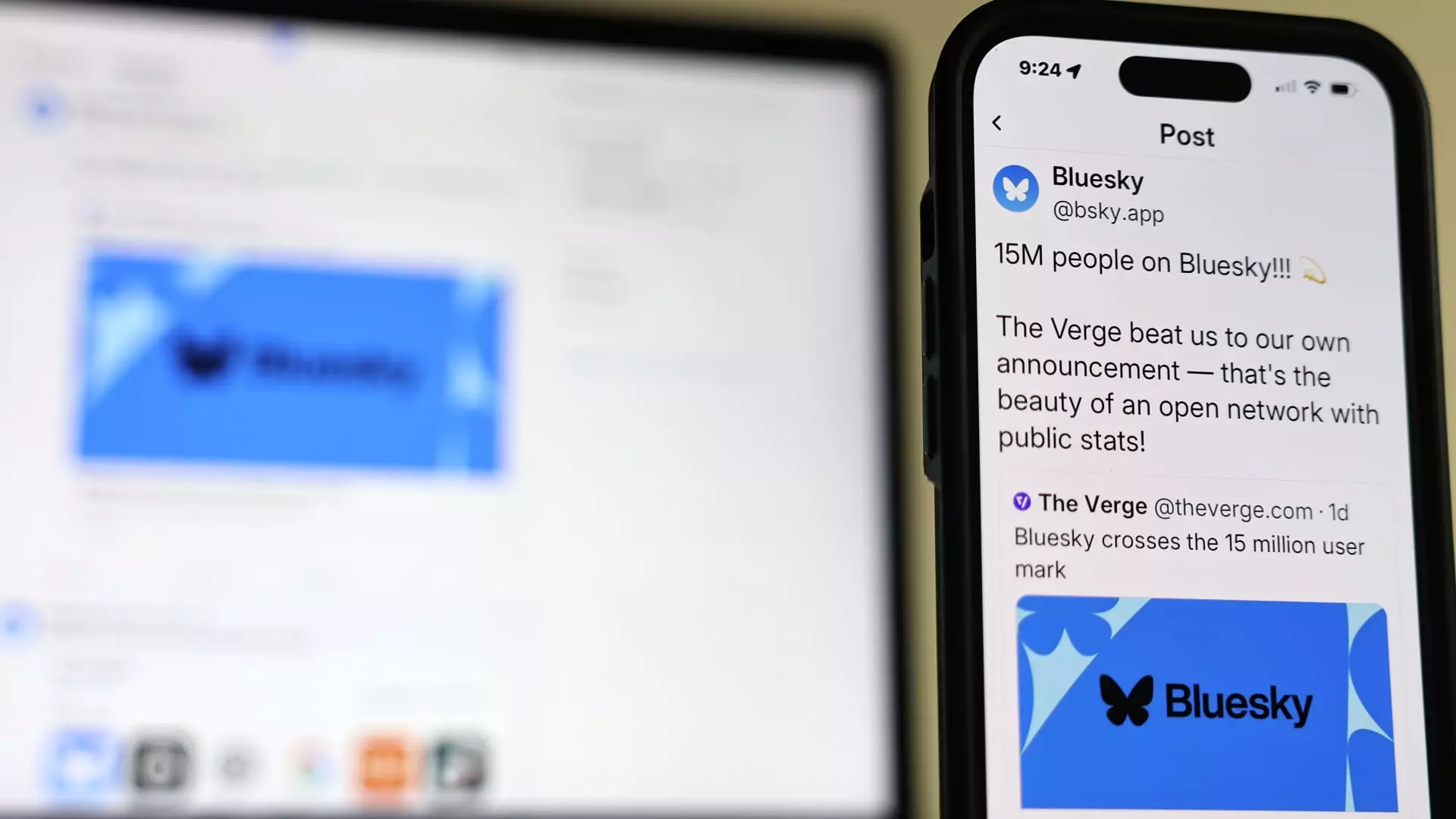In the landscape of social media, giants like Elon Musk’s X and Meta’s Threads dominate the field. However, the advent of Bluesky has introduced a fresh element to this competitive arena. Following the recent presidential election, Bluesky experienced a notable surge in user adoption, carving out its niche among established platforms. With over 21 million users and escalating popularity, bluesky seeks to offer an alternative to the conventional models presented by its more established counterparts. The question remains: what differentiates Bluesky from the likes of its competitors?
At the helm of Bluesky is CEO Jay Graber, who has articulated a vision that strongly prioritizes user autonomy. In a recent discussion, she emphasized that the platform’s architecture is intentionally designed to ensure that users can transition seamlessly away from Bluesky if needed. She coined the term “billionaire proof,” arguably indicating that the platform’s open-source nature safeguards users from arbitrary disruptions that often accompany high-profile acquisitions. Unlike Twitter’s turbulent changes post-Musk acquisition, Bluesky users possess the unique ability to migrate with their followers intact, mitigating the chaotic fallout that can ensue during corporate takeovers.
Graber’s assertion reinforces the notion that strategic design can empower users decisively. It stands in stark contrast to the traditional social media model where users often feel trapped within a single ecosystem, unable to retain their social capital if they leave. By offering users the ability to exit the platform while preserving their social connections, Bluesky enriches the user experience, positioning itself as a more resilient alternative within the social sphere.
Bluesky’s origins trace back to an internal project initiated by Jack Dorsey, co-founder of Twitter, in 2019, before transitioning into a public benefit corporation in 2022. This lineage reveals that Bluesky was conceived with a progressive outlook on social media—one that champions transparency and user control over their digital experiences. According to Graber, the platform aspires to provide an unprecedented degree of openness, potentially reshaping social media interactions.
Unlike traditional platforms that prioritize revenue generation through intrusive advertising, Bluesky is clear about its stance on monetization. Graber explicitly stated that algorithmically driven ads would not find a place within the ecosystem. This approach further enhances the appeal of Bluesky, as users often grow fatigued with the relentless barrage of targeted advertisements that plague many other social networks. Instead, Bluesky’s strategy revolves around offering subscription models that grant users premium features, aligning with a more sustainable revenue model.
The growth trajectory of Bluesky has showcased its resilience and adaptability in an evolving market. Significant surges in user registration, such as the additional two million users amassed after X faced challenges in Brazil, highlight its potential to react swiftly to shifts in user sentiment and market dynamics. Graber’s announcement of raising $15 million in a recent funding round underlines investor confidence in Bluesky’s future. With a total funding tally of $36 million, the platform is well-positioned to further expand, especially through the development of a robust “developer ecosystem” for third-party coders.
The roadmap ahead for Bluesky is laden with opportunities. By facilitating an environment where developers can create customized features, Bluesky stands to enrich its platform, fostering innovation at a grassroots level. This collaborative approach can lead to a wider array of offerings, enhancing overall user engagement and satisfaction.
As the social media landscape becomes increasingly saturated, Bluesky illustrates a progressive approach that prioritizes user autonomy, transparency, and sustainable growth. Through its emphasis on a community-driven experience and an open-source foundation, it presents a compelling alternative to traditional platforms. If Bluesky continues down this path, it will not only carve out a unique identity but also challenge prevailing social media norms, setting new standards in user empowerment and engagement. As it navigates its development, industry observers will keenly watch whether Bluesky can maintain its momentum and realize its ambitious vision amidst formidable competition.


Leave a Reply